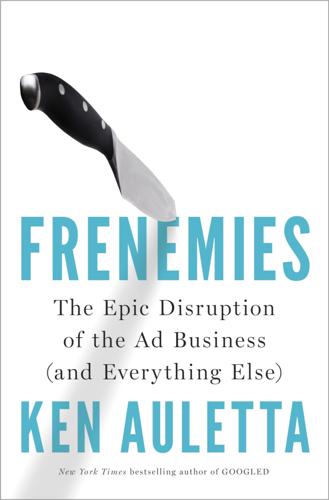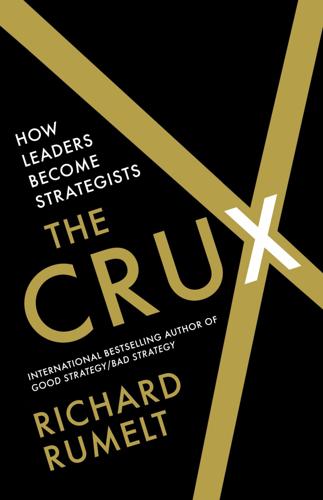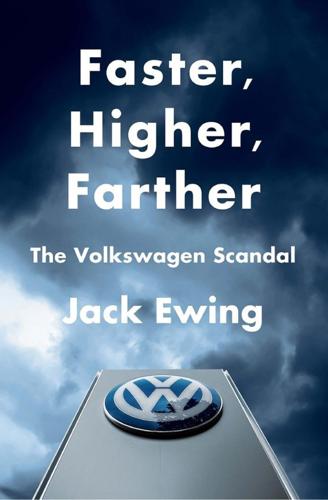crossover SUV
description: a type of sport utility vehicle built on a unibody platform, combining features of an SUV with those of a passenger vehicle.
8 results

Right of Way: Race, Class, and the Silent Epidemic of Pedestrian Deaths in America
by
Angie Schmitt
Published 26 Aug 2020
It weighs thirty-eight hundred pounds—about fifteen hundred pounds less than a 2007 Cadillac Escalade—but it is still about one thousand pounds heavier than a Honda Civic. The Santa Fe belongs to a class of cars—crossover vehicles—that have experienced huge growth since the introduction of the first model, the Toyota RAV4, to the United States in 1996. In 2018, crossover SUVs topped cars (sedans) as the top-selling US vehicle type.5 It is hard to overemphasize just how suddenly and completely crossovers have come to dominate the auto market in recent years. When the economy was still recovering from a recession, in 2012, the vehicle mix was almost the opposite: 83 percent of vehicles sold in the United States were sedans.6 “The sedan segment is dying,” Tom McParland wrote on the auto news site Jalopnik in 2018.
…
By 2018, the others of the Detroit-based “Big Three” automakers—Ford and GM—had also all shifted focus away from sedans to trucks and SUVs, laying off workers across the Rust Belt as they ended production of the Cruise, Focus, Taurus, Fiesta, and hybrid vehicles like the C-Max and Volt.8 Hyundai marketed the Santa Fe specifically to families with children as a carpool car and had great success, at times struggling to keep up with supply.9 Among crossovers, the vehicle is considered a safe one. In fact, U.S. News and World Report ranked it the cheapest car to insure in 2009.10 Riding High For buyers of crossover SUVs, being higher off the ground is a big selling point. In a 2014 article for the Atlantic, Alexis Madrigal wrote that in the 2010s, buyers “settled into the idea that they might not actually go off-roading with their vehicles. They would not climb mountains. But they liked riding high.”11 But with riding higher—as well as added weight—come some drawbacks in terms of visibility in addition to other risks to pedestrians, especially children.
…
The heights of the front ends of cars and SUVs vary quite a bit, but this information is not publicly collected and made available anywhere by automakers or safety regulators. So, for research purposes, I went out and measured. For sedans—a Volkswagen Jetta and a Ford Fiesta—the top of the front end was about two and a half feet high. A minivan, meanwhile—a Chrysler Town and Country—was a little bit higher: closer to three feet. Some crossover SUVs—a Ford Escape and a Buick Encore—are just a bit higher than that: slightly more than three feet. But there is a wide range. A Jeep Wrangler and a Jeep Grand Cherokee, for example, are about three-and-a-half-feet tall—a full foot higher than a sedan. The Ford Expedition and the GMC Sierra—a full-size SUV and a pickup, respectively—are both nearly four feet high where the hood meets the front end.21 In addition, the shapes are important.

Economic Gangsters: Corruption, Violence, and the Poverty of Nations
by
Raymond Fisman
and
Edward Miguel
Published 14 Apr 2008
Sub-Saharan Africa faces far more frequent droughts than other tropical regions as a result of global climate patterns, the continent’s shape, the position of mountain ranges, and other accidents of geography.15 It’s one of the ironies of modern finance that the tools that could most help the poor are least readily available to them. A stark illustration of drought-as-trigger is the recent war in Niger, Chad’s western neighbor in the bone-dry Sahel. Niger is home to the pastoralist Tuareg ethnic group. The car company Volkswagen appropriated their name for a highly successful crossover SUV, but the tribe itself hasn’t been so lucky. Their herds were devastated by a series of ever deeper droughts in the 1970s and 1980s.16 Initially, the Tuareg responded to the loss of livelihood by migrating north in large numbers to Algeria and Libya in search of better living conditions, defusing the imminent threat of conflict.

The Best Interface Is No Interface: The Simple Path to Brilliant Technology (Voices That Matter)
by
Golden Krishna
Published 10 Feb 2015
He doesn’t want to put down the heavy object, pull out his smartphone, tap and swipe, put away his phone, and then potentially throw out his back trying to pick up the heavy object again. Not too good news for our app makers. I didn’t make the observation. The Ford Escape design team did. In the “crossover SUV market awash with new models,” Ford was hoping to create something that would distinguish its SUV from the others.6 Did they make an app with bigger buttons? Add voice commands so that their customers can stand in a parking lot shouting random commands at their trunk? Nope. They put a set of sensors under the bumper that can read a foot kick—a simple and easy action that works within the typical process of carrying something heavy to the trunk.

Frenemies: The Epic Disruption of the Ad Business
by
Ken Auletta
Published 4 Jun 2018
With that much data on its users, Facebook can target hundreds of thousands and even millions of users—“at Facebook we call it personal marketing at scale,” Everson says. “The definition of creative advertising has changed. It’s not just Don Draper creating ads.” Targeting and the technology that allows it becomes part of the creative recipe. By way of illustration, she recounted how Lexus launched a new Lexus NX model, a crossover SUV, in a thirty-second ad for the 2015 Super Bowl, and also made this part of a larger campaign by creating unique video ads targeted to individual Facebook users. Instead of a single TV or print ad, working with Facebook Lexus produced a thousand different online advertisements. If you were a male living in Silicon Valley, or a female surfboarder living in Los Angeles, or a golfer, or you were a past Lexus owner, or planned to buy a car in the next three months, Facebook merged its anonymous user data with Lexus’s, along with so-called third party data they purchased.

The Crux
by
Richard Rumelt
Published 27 Apr 2022
Since the ignition-switch crisis, CEO Barra had gotten the company out of Western Europe, Russia, South Africa, and India. It stopped assembling cars in Australia and Indonesia. Once the world’s largest automaker, GM is gradually rethinking the logic of scale economies that drives so much of the industry. Among traditional marquees, it continues to do well with full-size trucks, crossover SUVs, and Cadillac brands. Its new focus is on all-electric vehicles, which Barra sees as the growth market of the future. INERTIA AND SIZE Mass has inertia. The greater the mass, the more force will be needed to change its speed or direction. Organizational inertia is normally the problem of large organizations.

Faster, Higher, Farther: How One of the World's Largest Automakers Committed a Massive and Stunning Fraud
by
Jack Ewing
Published 22 May 2017
Volkswagen was a leading player in all of the world’s largest car markets except for the United States, where the VW brand was struggling. Sales were down 2.5 percent so far that year in an otherwise booming U.S. market. Winterkorn did not mention any of that. But he made it clear that Volkswagen was not ready to give up on the United States. The company planned to produce a new crossover SUV at its factory in Chattanooga, addressing the American fondness for four-wheel drive vehicles. “Volkswagen is staying in the driver’s seat,” Winterkorn said. FOUR DAYS LATER, on September 18, 2015, the Environmental Protection Agency held a press conference and issued a so-called notice of violation accusing Volkswagen of using software “that circumvents emissions testing for certain air pollutants.”

The Optimist: Sam Altman, OpenAI, and the Race to Invent the Future
by
Keach Hagey
Published 19 May 2025
“I realized that aerospace was kind of slow-moving,” she told an audience at Dartmouth in 2024.17 (In the same interview, she caused a minor furor by saying that, as a result of AI, “some creative jobs maybe will go away but maybe they shouldn’t have been there in the first place”—a quote she felt was taken out of context.) In 2013, she joined Tesla, where she worked on the Model S, Tesla’s four-door sedan, and the Model X, the company’s crossover SUV, serving as product manager of the latter overseeing manufacturing, sales, design, engineering, hardware, and software. While she was working on the Model X, Tesla released initial versions of its AI-enabled driver-assistance system, Autopilot, and she became interested in the space. In 2016, she left Tesla for Leap Motion, a startup funded by Founders Fund that aimed to make it possible for people to interact with digital devices by just waving their hands.

Fall; Or, Dodge in Hell
by
Neal Stephenson
Published 3 Jun 2019
Under that cover, she had, with Corvallis, raised three children in weirdly normal urban-soccer-mom style. They had never made a decision that he’d work full-time and she wouldn’t; it had just developed along those lines. Under a pseudonym, she had maintained, for three years, a blog called “Luxury Crossover SUV as Prosthesis” in which she reimagined the elite-mom lifestyle as a centaurlike existence in which one’s body, and hence identity, effectively merged with the vehicle in which one spent several hours a day stuck in traffic between various child-related errands, or spiraling up and down immense multilevel parking structures while absorbed in podcasts or engaged in Bluetooth-mediated telepathy with other such persons.
…
She had pursued a thread originating in Greek mythology, according to which centaurs were in some cases benevolent nurturers linked to the healing arts. The blog was witty but a little too unsparing and scary-smart to attract a wide audience—she had maybe ten thousand followers at peak, but they had a tendency to age out as their kids got into their teens. Anyway, the era of the awesomely huge gleaming luxury crossover SUV was coming to an end. Like Tolkien’s elves fading away and going into the west, they were dissolving into the used market as many families were downsizing their fleets in favor of ride-sharing services, and then fully autonomous vehicles that were owned by no one and everyone. So by the time Maeve’s and Corvallis’s kids were in the nine to twelve range, she had stopped writing the blog and, intellectually/artistically, gone dark for a decade.